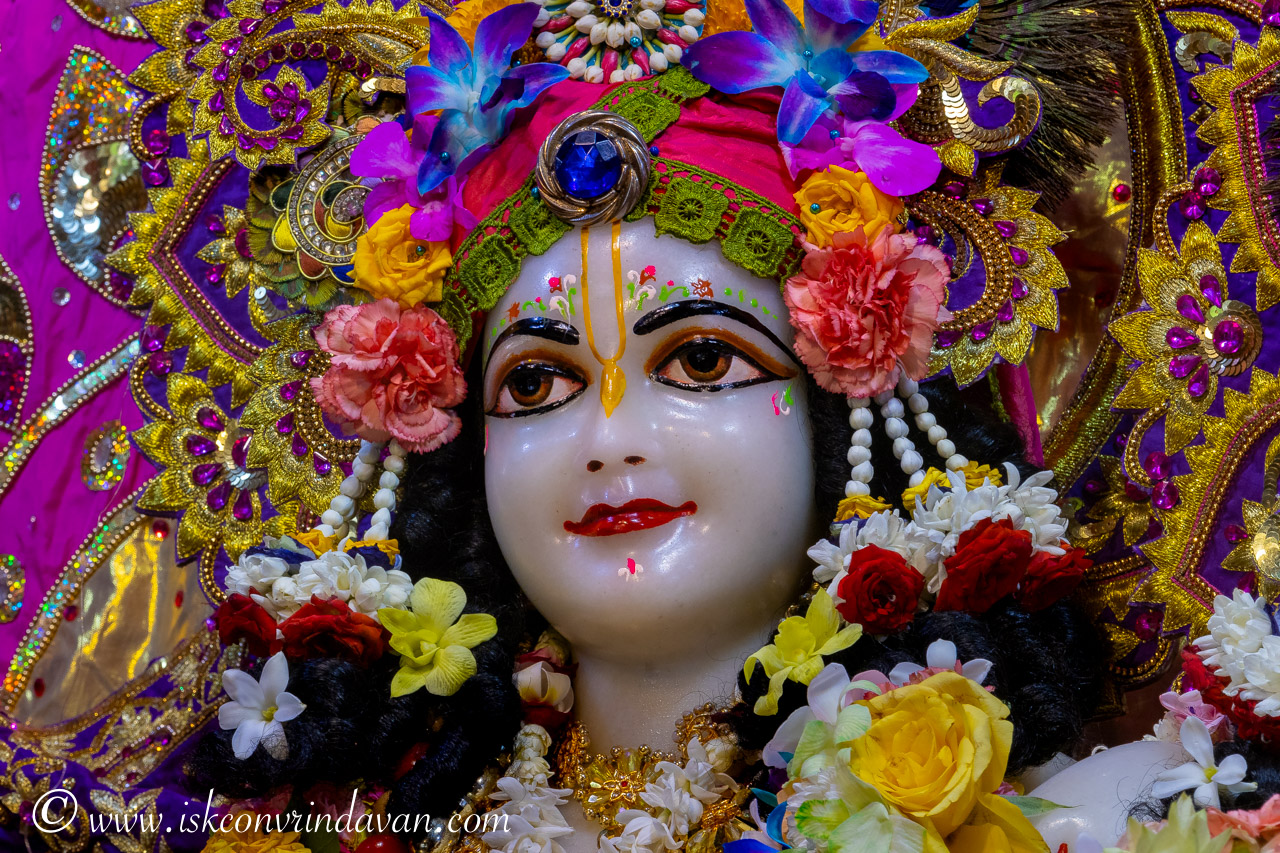
हलषष्ठी
(हिंदी में अर्थ एवं व्याख्या सहित)
halaṣaṣṭhī | Halshashthi
(With meaning and explanation in English)
The festival of Har Chhath, Hal Chhath or Hal Shashthi is celebrated on Shashthi of Krishna Paksha of Bhadrapada month as the birthday of Lord Krishna's elder brother Shri Balram Ji. The main weapons of Shri Balram ji are plow and pestle, hence he is also called Haldhar. This festival is called Hal Shashthi after his name.
Last Updated: 25th August, 2024
गंगाद्वारे कुशावर्ते विल्वके नीलेपर्वते।
स्नात्वा कनखले देवि हरं लब्धवती पतिम्॥
ललिते सुभगे देवि-सुखसौभाग्य दायिनि।
अनन्तं देहि सौभाग्यं मह्यं, तुभ्यं नमो नमः॥
gaṃgādvāre kuśāvarte vilvake nīleparvate।
snātvā kanakhale devi haraṃ labdhavatī patim॥
lalite subhage devi-sukhasaubhāgya dāyini।
anantaṃ dehi saubhāgyaṃ mahyaṃ, tubhyaṃ namo namaḥ॥
हे देवी! आपने गंगा द्वार, कुशावर्त, विल्वक, नील पर्वत और कनखल तीर्थ में स्नान करके भगवान शंकर को पति के रूप में प्राप्त किया है। सुख और सौभाग्य देने वाली ललिता देवी आपको बारम्बार नमस्कार है, आप मुझे अचल सुहाग दीजिए।
Oh, goddess! You have obtained Lord Shankar as your husband by bathing in Ganga Dwar, Kushavarta, Vilvaka, Neel Parvat, and Kankhal Tirtha. Lalita Devi, the giver of happiness and good fortune, I salute you again and again, may you give me everlasting love.
The festival of Har Chhath, Hal Chhath or Hal Shashthi is celebrated on Shashthi of Krishna Paksha of Bhadrapada month as the birthday of Lord Krishna's elder brother Shri Balram Ji. Shri Balram ji is considered the god of agriculture whose main weapons are plow and pestle, hence he is also called Haldhar. This festival is called Hal Shashthi after his name. This festival is also known as Baldev Chhath, Lalhi Chhath, Randhan Chhath, Tinchhathi, and Chandan Chhathi.
हरछठ, हल छठ या हल षष्ठी का त्योहार भाद्रपद मास के कृष्ण पक्ष की षष्ठी को भगवान कृष्ण के बड़े भाई श्री बलराम जी के जन्म दिन के रूप में मनाया जाता है। श्री बलराम जी को कृषि का देवता माना जाता है जिनका मुख्य शस्त्र हल और मूसल है इसीकरण उन्हें हलधर भी कहा जाता है। उन्हीं के नाम पर इस त्योहार को हल षष्ठी कहा जाता है। इस त्योहार को बलदेव छट, ललही छठ, राँधण छठ, तिनछठी, और चंदन छठी के नाम से भी जाना जाता है।
Women observe the fast of Harchhath with the wish of happiness for their children. By observing this fast, the child gets the blessings of good health and longevity. Along with this, one also attains happiness and prosperity.
हरछठ का व्रत महिलायें संतान सुख की कामना लेकर पूजा करती हैं। इस व्रत को करने से संतान को अच्छा स्वास्थ्य और दीर्घायु का आशीर्वाद प्राप्त होता है। इसके साथ ही, सुख-समृद्धि की प्राप्ति भी होती है।
On this day, mothers are required to eat Mahua Datoon and Mahua. On the day of Harchhath, no crop or grain grown by plowing is eaten. In today's fast, only fruits and vegetables grown in the pond, like tinni rice, kermua saag, paashi rice, and Chinese rice are consumed. Buffalo milk, ghee, dry fruits, red rice, etc. are consumed on this day. Consumption of cow's milk and curd is prohibited. Similarly, tamasic food like onion and garlic are not used. On this day one should not step on the land plowed by plough.
इस दिन माताओं को महुआ की दातून और महुआ खाने का विधान है। हरछठ के दिन हल से जोत कर उगाया हुआ कोई भी फसल या अनाज नहीं खाया जाता है। आज के व्रत में केवल तालाब में उगाया फल सब्ज़ियाँ, जैसे तिन्नी चावल, केरमुआ साग, पासही चावल, और चीनी चावल का सेवन किया जाता है। इस दिन भैंस का दूध, घी, सूखे मेवे, लाल चावल, आदि का सेवन किया जाता है। गाय का दूध और दही का सेवन वर्जित रहता है। इसी प्रकार, प्याज़, लहसुन जैसे तामसिक भोजन का प्रयोग नहीं किया जाता है। इस दिन हल से जोती गई धरती पर पैर नहीं रखना चाहिए।
On this day, after bathing in the morning, women resolve to observe a fast while facing north. Plow is worshiped on this day. In the afternoon, women worship by planting strawberries, palash, and bronze sprigs in their courtyard. After placing the photo of Chhath Mata, she is offered Satanja made by mixing seven grains (gram, barley, wheat, paddy, arhar, maize, moong) and rice with curd tinni. After worshiping, Havan is performed with butter made from buffalo milk. After this, the story of the fast is heard.
इस दिन महिलायें प्रातः काल स्नानादि से निवृत होकर व्रत धारण करने का संकल्प उत्तराभिमुख होकर करती हैं। इस दिन हल की पूजा की जाती है। मध्यान्ह काल में महिलायें अपने आँगन में झरबेरी, पलाश और कांसी की टहनी लगाकर पूजा करती हैं। छठ माता का फ़ोटो लगाकर उनको सात अनाजों (चना, जौं, गेहूं, धान, अरहर, मकाँ, मूँग) को मिलाकर बनाया हुआ सतनजा और दही तिन्नी के चावल से भोग लगाया जाता है। पूजन करने के पश्चात भैंस के दूध से बने मक्खन द्वारा हवन किया जाता है। इसके बाद व्रत की कथा सुनी जाती है।
At the end of the puja, the following prayer is said:
पूजन के अंत में निम्न प्रार्थना की जाती है:
गंगाद्वारे कुशावर्ते विल्वके नीलेपर्वते।
स्नात्वा कनखले देवि हरं लब्धवती पतिम्॥
ललिते सुभगे देवि-सुखसौभाग्य दायिनि।
अनन्तं देहि सौभाग्यं मह्यं, तुभ्यं नमो नमः॥
Oh, goddess! You have obtained Lord Shankar as your husband by bathing in Ganga Dwar, Kushavarta, Vilvaka, Neel Parvat, and Kankhal Tirtha. Lalita Devi, the giver of happiness and good fortune, I salute you again and again, may you give me everlasting love.
हे देवी! आपने गंगा द्वार, कुशावर्त, विल्वक, नील पर्वत और कनखल तीर्थ में स्नान करके भगवान शंकर को पति के रूप में प्राप्त किया है। सुख और सौभाग्य देने वाली ललिता देवी आपको बारम्बार नमस्कार है, आप मुझे अचल सुहाग दीजिए।
 : Login
: Login Login with Google
Login with Google